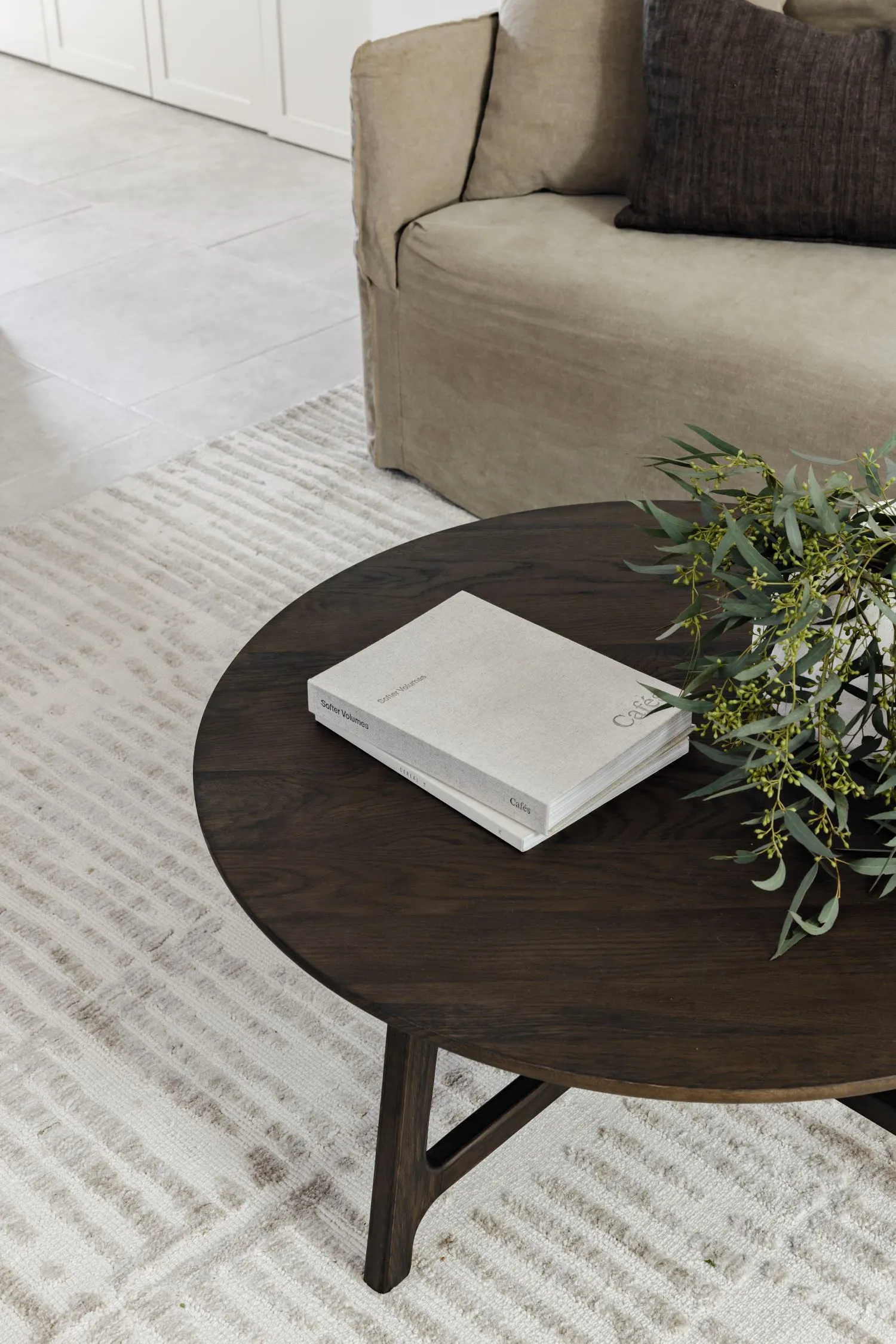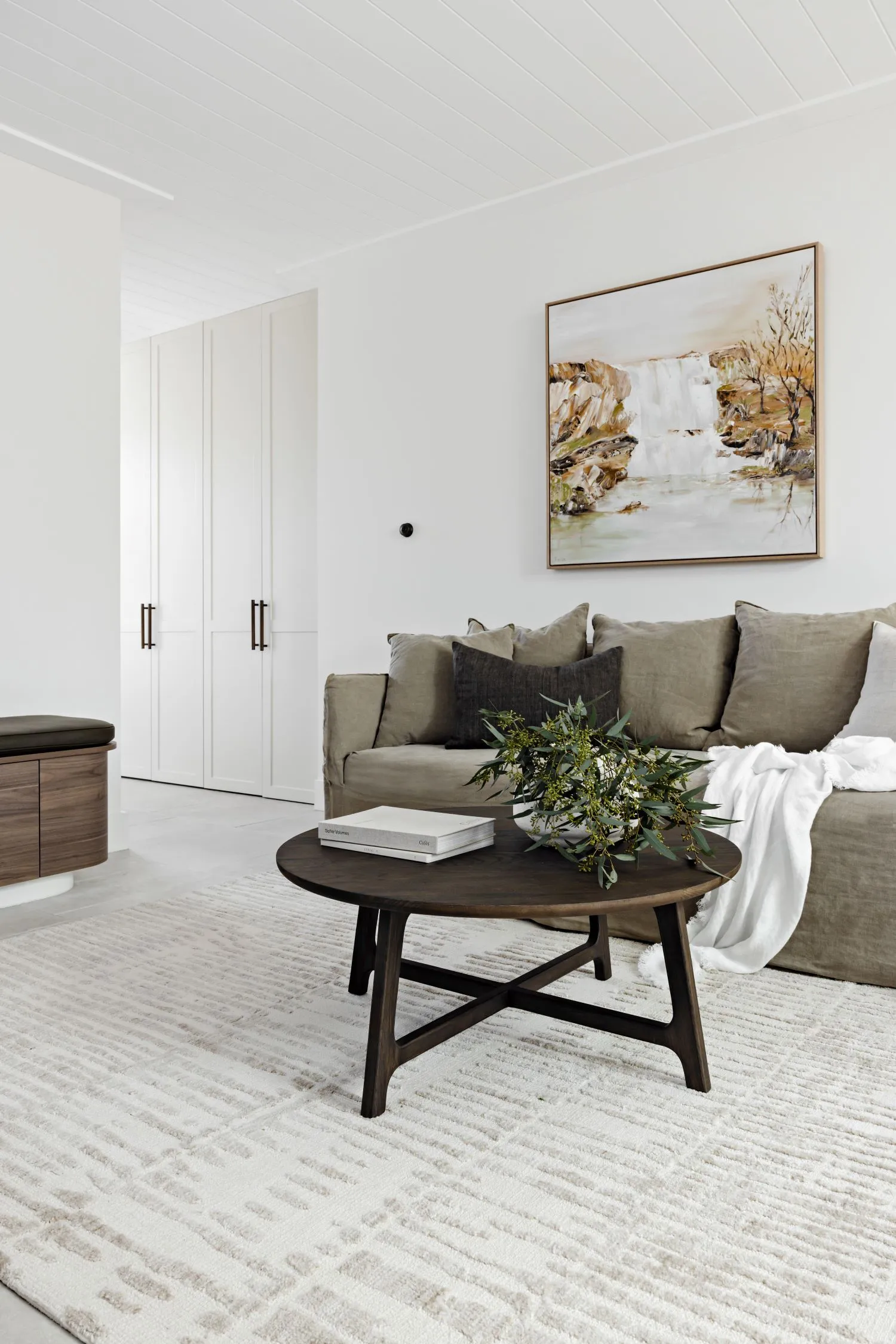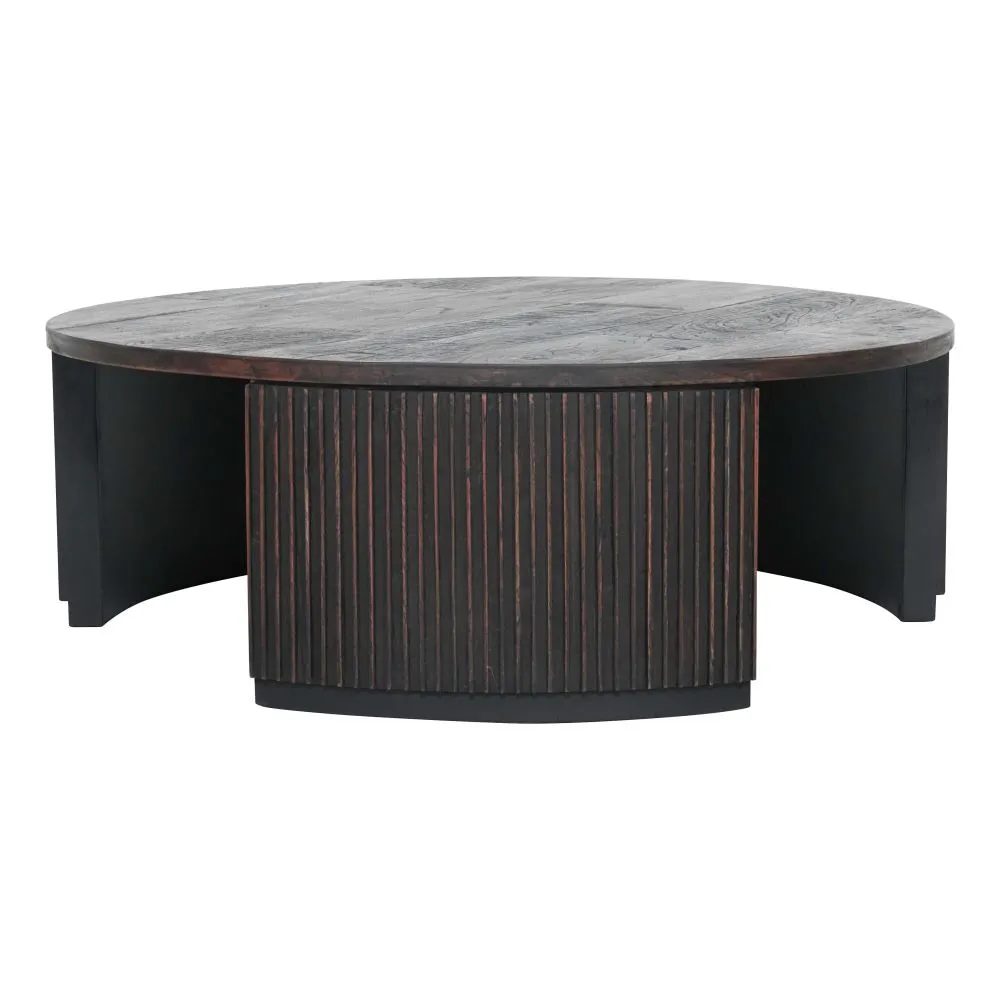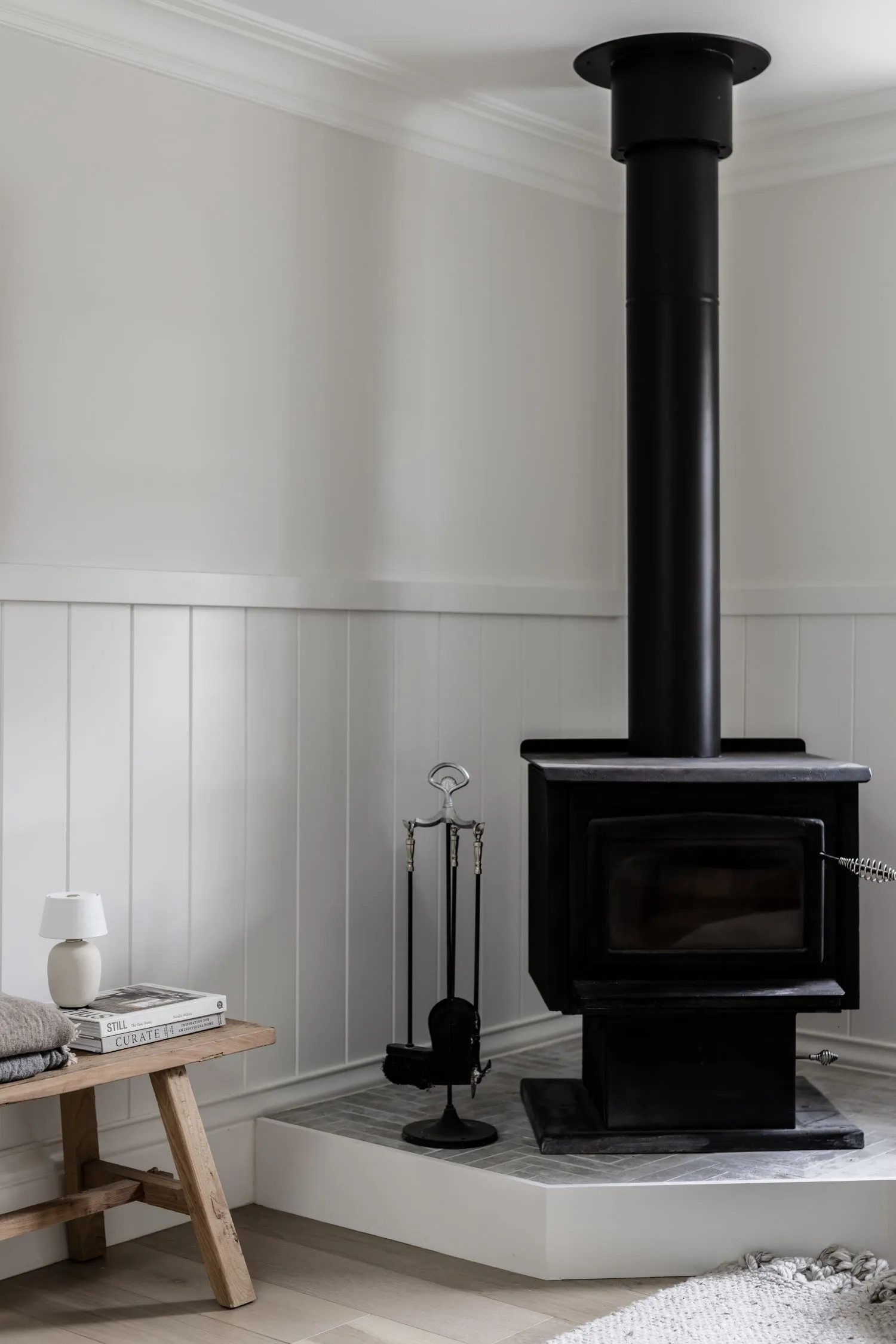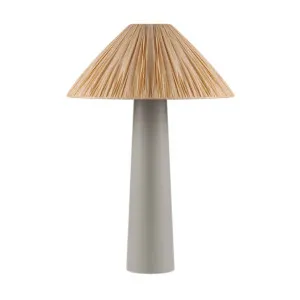Ideas
10 Tips for Creating a Japandi Style Living Room
Japandi is an interior design style that has continued to remain a favourite within the interior design industry and for a very good reason. If you’re not familiar with Japandi, essentially, it’s a harmonious blend of Japanese minimalism and Scandinavian functionality, combining the best of both. This aesthetic emphasises simplicity, natural elements, and a calming palette, making it the perfect choice for creating a serene home.
If you’re looking to add a touch of minimalism to your home, or want to upgrade your entire living room space, then we’ve got you covered. We’ve put together 10 essential tips to help you create a Japandi style living room that you’ll never want to leave.
Looking for even more Japandi inspiration? Discover The Ultimate Guide to Creating a Japandi Style Home.
 Image credit: Bone & Blanc | Katie Wade Studio
Image credit: Bone & Blanc | Katie Wade Studio
1. Mastering Minimalism is Key to a Japandi Style Living Room
In a Japandi style living room, minimalism is more than an aesthetic; it's a philosophy. Taking this approach encourages you to really look at your relationship with your space and the pieces within it. The aim is to create an environment where each item has purpose and significance. To master minimalism, carefully curate your furniture and décor, only choosing pieces that resonate with you. Remember, in a Japandi space, less is more and each selection should contribute to a sense of harmony and balance.
Discover our Living Room product category with thousands of products to suit every style space.
2. Harmonising with Neutral Colours in a Japandi Style Living Room
A neutral, grounding colour palette is key to achieving a Japandi style. Think soft earthy tones, muted greys, off-whites, and even moody blacks to create a warm, inviting space. These colours work to soothe the senses while creating a picture-perfect backdrop for highlighting natural materials and textures (but more on that later). Don’t forget to also consider how these shades will interact with your space. Soft, muted colours can make your living room feel lighter and more open, whereas darker tones will work to create a cosy vibe. Experiment with layering neutral colours through paint, textiles, and accessories to add depth and interest while maintaining a cohesive look.
Choosing the right palette can be a little tricky at the start, so we recommend using resources, such as Dulux’s guide to achieve the Japandi look in your home.
 Image credit: SMUB Studio | Rex Whiticker
Image credit: SMUB Studio | Rex Whiticker
3. Celebrating Natural Materials in a Japandi Style Living Room
Incorporating natural materials goes beyond aesthetics; it's about creating a tactile experience and connecting with the natural world. Explore the use of various woods, from the light and airy pine to the rich and textured reclaimed teak. Complement these with natural fibres like cotton, linen, and wool to introduce a sense of comfort and warmth that synthetic materials can't replicate.
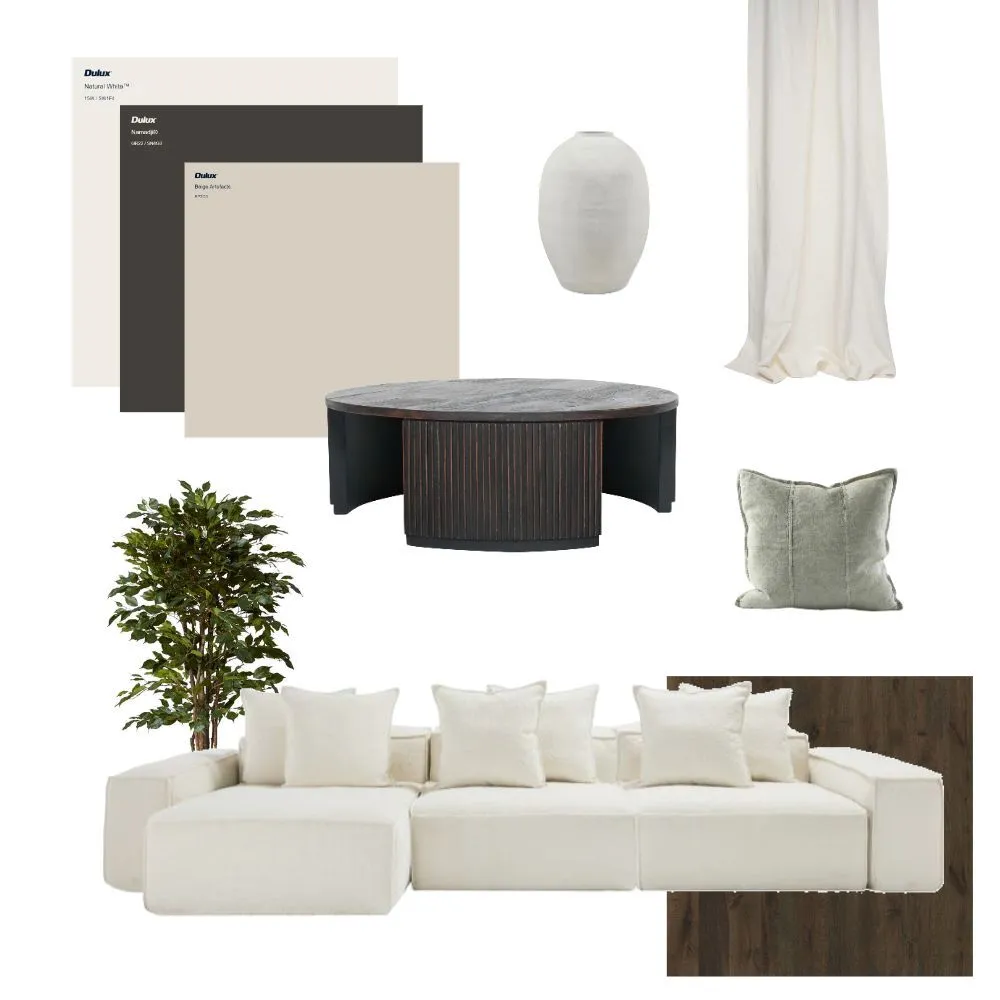 Mood board created on Style Sourcebook. View mood board here.
Mood board created on Style Sourcebook. View mood board here.
4. Japandi Style Living Rooms Value Quality and Craftsmanship
When selecting furniture and décor, consider the quality and the story behind each piece. Japandi style values items that are made to last, often featuring handcrafted and quality details that showcase the skill and dedication of the product. Investing in quality pieces not only ensures durability but also adds a layer of authenticity and character to your living room.
There’s so much to love about Japandi style homes, so why not discover 12 Japandi Bathroom Ideas?
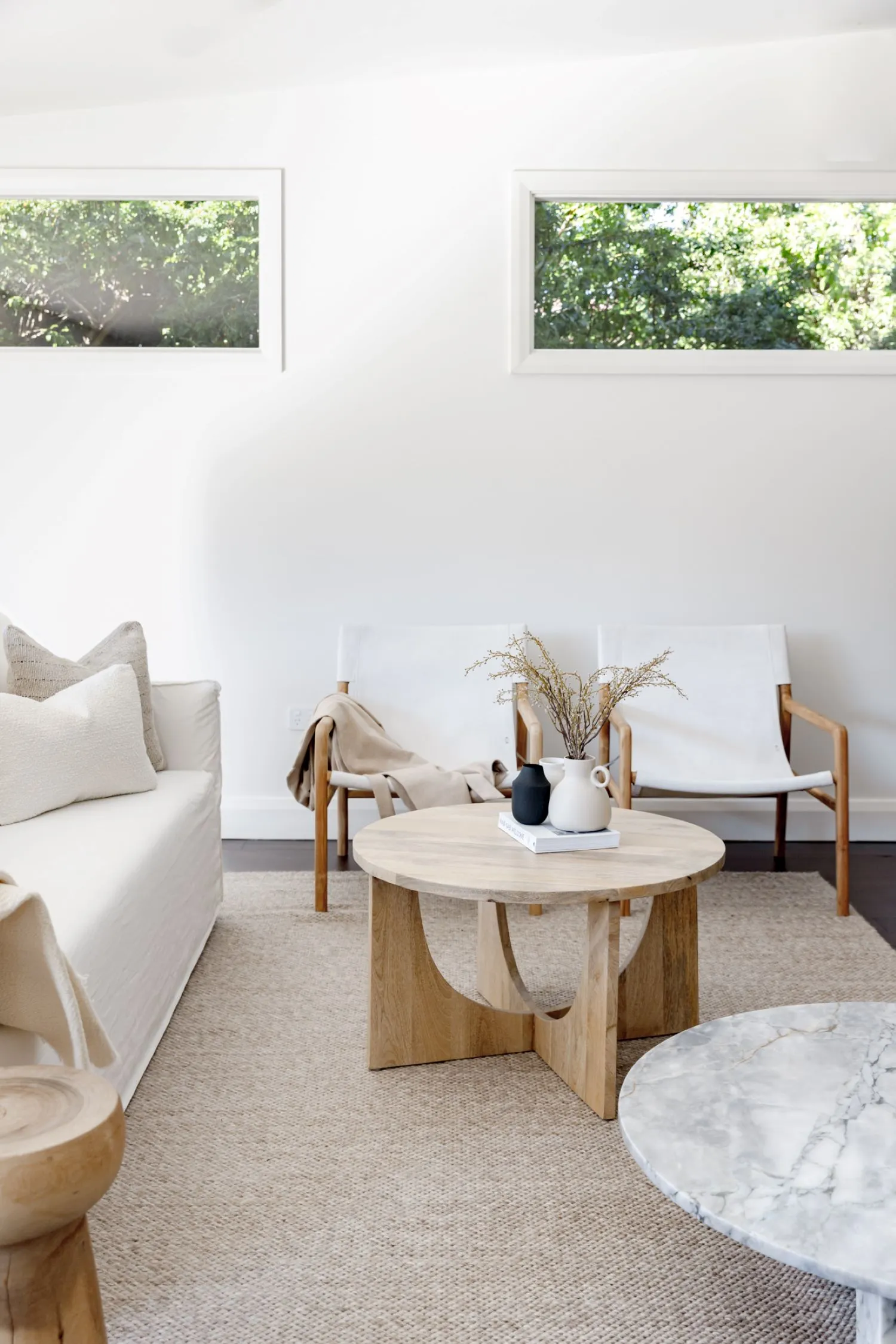 Image credit: Bone & Blanc | Katie Wade Studio
Image credit: Bone & Blanc | Katie Wade Studio
 Image credit: Bone & Blanc | Katie Wade Studio
Image credit: Bone & Blanc | Katie Wade Studio
5. Integrating Plants Thoughtfully Throughout Your Japandi Style Living Room
Plants in a Japandi living room are not just decorative, they also contribute to the room’s sense of tranquility and life. Select plants that thrive indoors and complement your room’s aesthetic. Arranging them also requires consideration as they should have enough room to grow and contribute to the room’s overall balance.
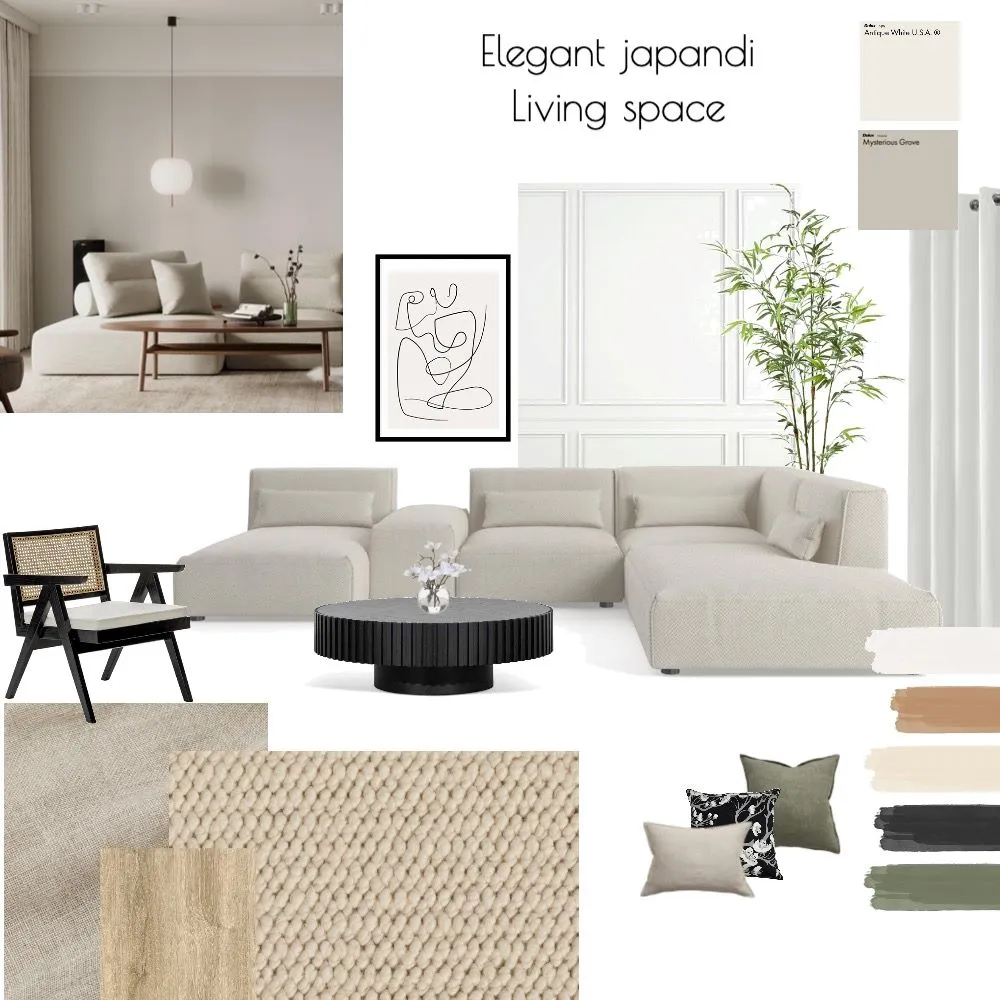 Mood board created by olivia.wootton on Style Sourcebook. View mood board here.
Mood board created by olivia.wootton on Style Sourcebook. View mood board here.
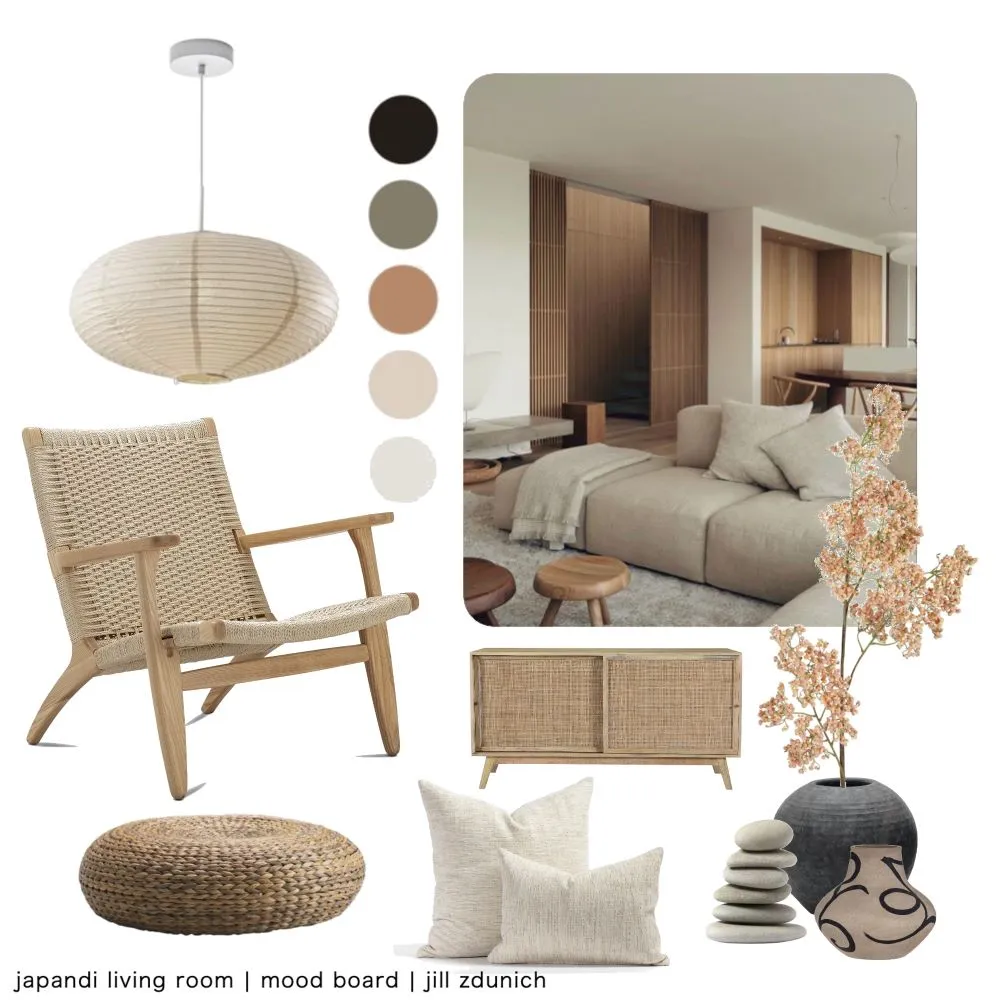 Mood board created by jillyzdunich on Style Sourcebook. View mood board here.
Mood board created by jillyzdunich on Style Sourcebook. View mood board here.
6. Blending Furniture Styles in a Japandi Style Living Room
The concept of Japandi is to fuse together Japanese and Scandinavian elements, but it’s not as simple as it seems, especially when it comes to furniture. Consider the scale and proportions of the pieces you want to add into your living room, they don’t just have the complement each other aesthetically, but also physically. We recommend starting by looking for common elements, such as shared materials or colour, to establish cohesion. Then evaluated how each piece functionally works together. For example, you may love your sofa and coffee table, but if you’re limited on space, together they could end up crowding your room, rather than balancing it.
Don’t forget to use our mood board tool to visualise your Japandi style living room before bringing it to life.
 Image credit: Studio Haus Co | Villa Styling
Image credit: Studio Haus Co | Villa Styling
7. Embracing Soft Textures in a Japandi Style Living Room
Soft textures play a crucial role in adding comfort and warmth to the minimalistic Japandi style. Beyond rugs and throws, we recommend considering incorporating textured wall hangings, window treatments, such as sheers, and upholstered furniture, such as boucle armchairs. These elements can add a sense of cosiness and an inviting touch, making the living room more inviting and homely.
There’s also other ways to bring Japandi style into your home, explore 16 Ideas for a Japandi Style Home Office.
8. Exploring Subtle Contrasts in a Japandi Style Living Room
Contrast in Japandi design isn't just about colours; it's also about forms and materials. Experiment with juxtaposing smooth, polished surfaces with rough, natural textures, or combining straight, clean lines with organic, curved shapes. These contrasts add visual interest and depth, preventing the space from feeling too uniform or sterile.
Looking for more inspiration? Discover How to Style a Living Room | 10 Steps to Completely Elevate Your Space.
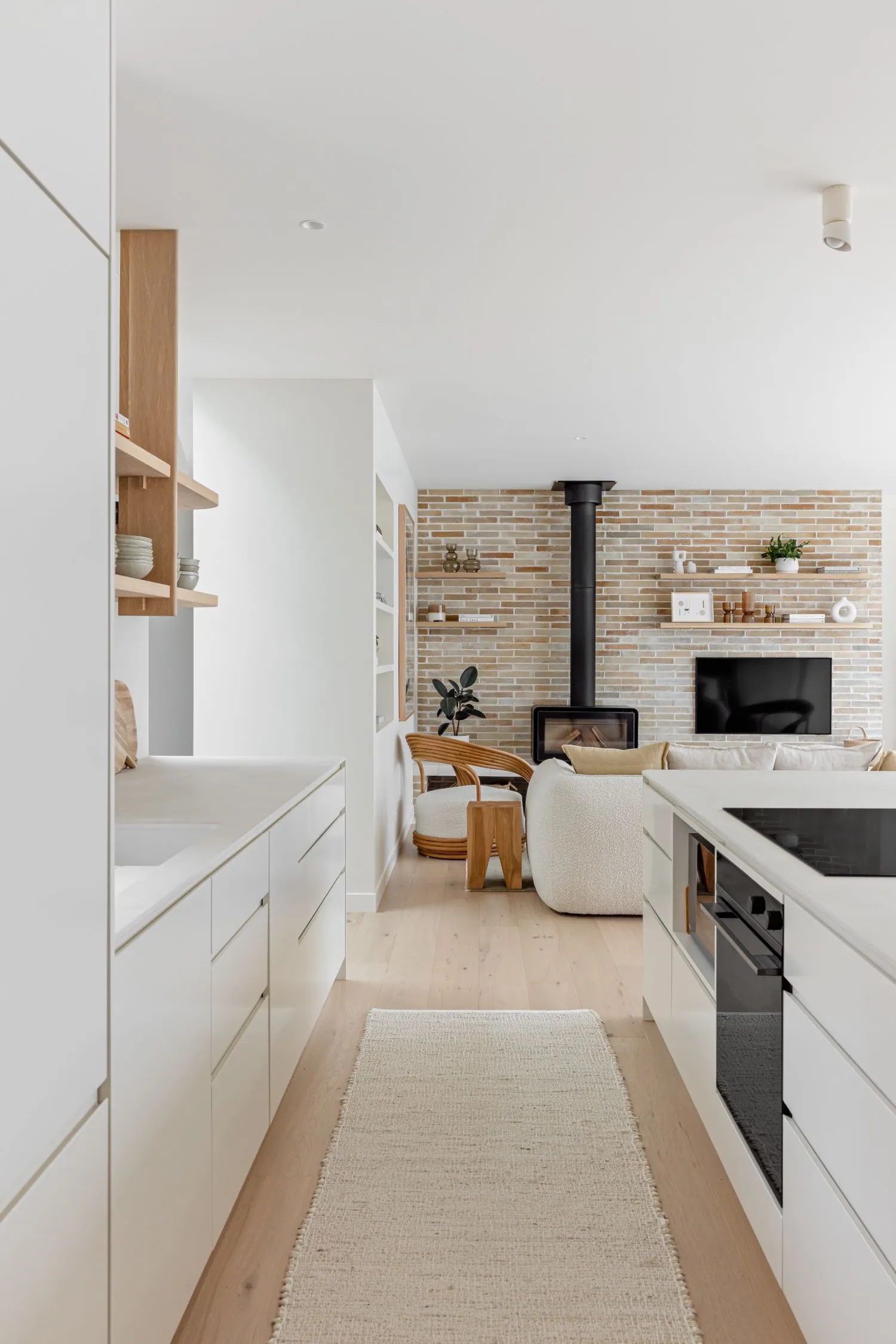 Image credit: @houseonesixtwo | Nat Spada
Image credit: @houseonesixtwo | Nat Spada
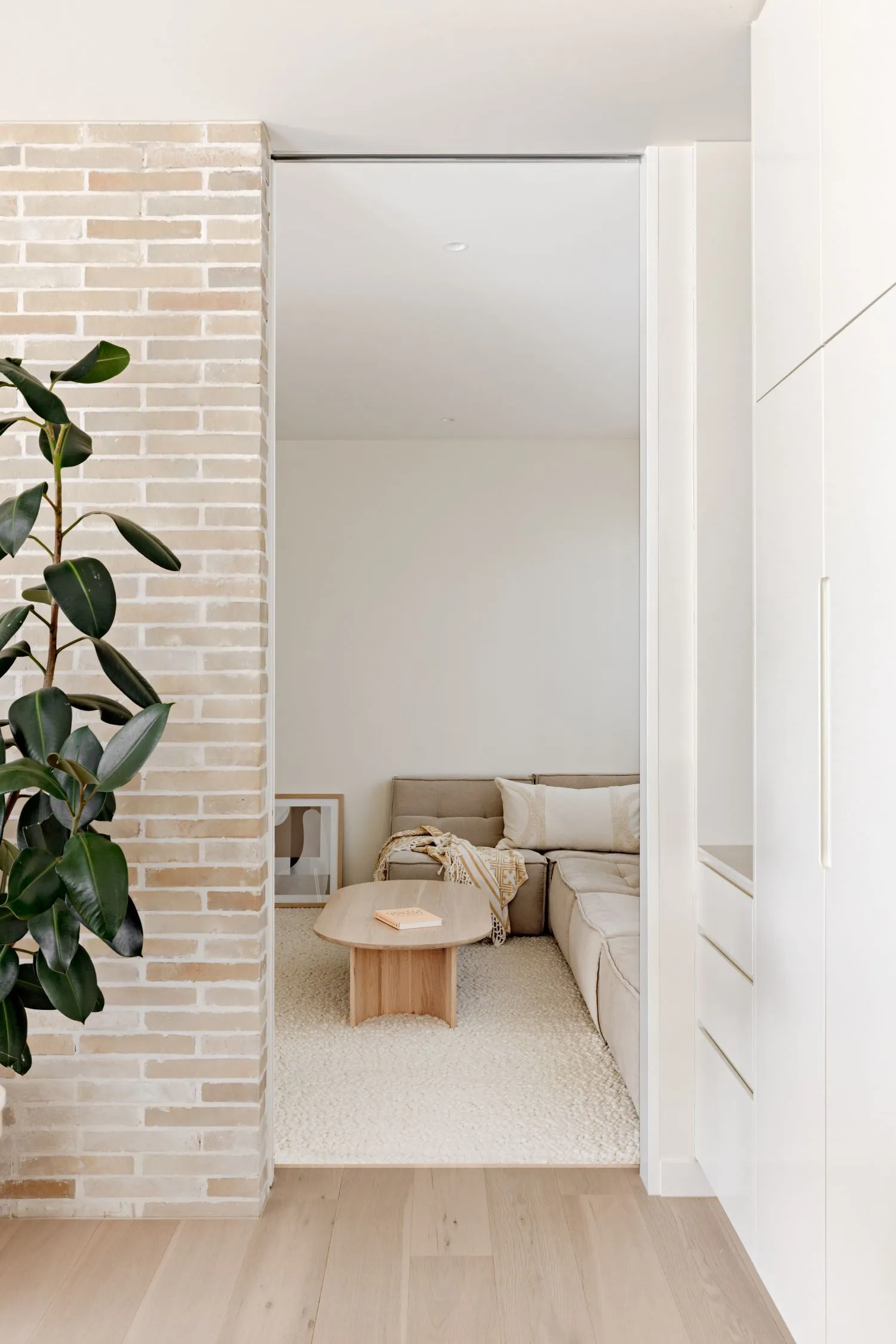 Image credit: @houseonesixtwo | Nat Spada
Image credit: @houseonesixtwo | Nat Spada
9. Choosing Functional Décor in a Japandi Style Living Room
In a Japandi living room, décor should be chosen with intention. Each piece should serve a purpose, whether it's to add beauty, provide function, or evoke a sense of calm. Consider items that have a dual purpose, such as a decorative vase that can also host flowers or greenery, or a beautiful throw that provides warmth on those colder evenings.
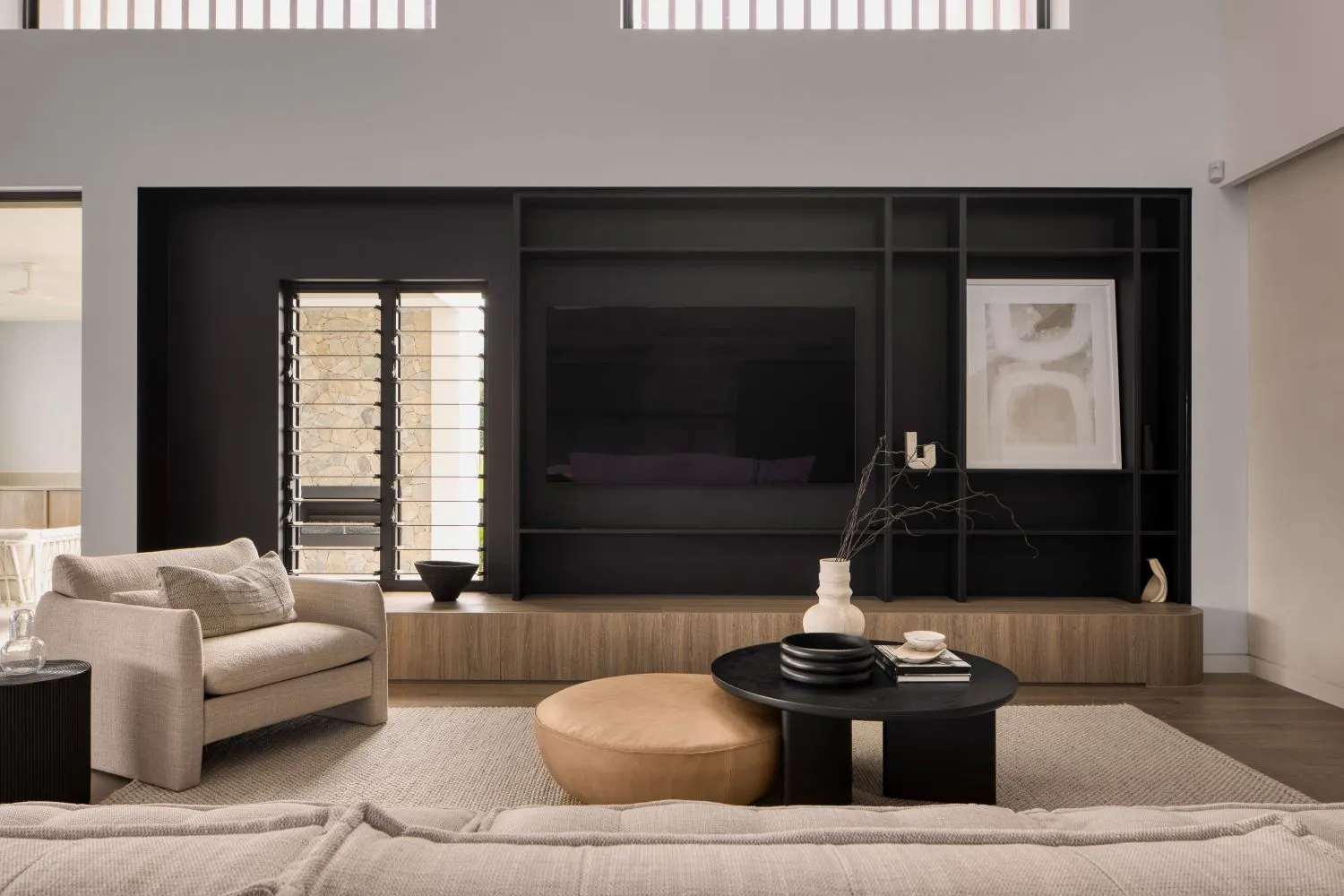 Image credit: Evoque Interiors | Kristian van der Beek
Image credit: Evoque Interiors | Kristian van der Beek
10. Ensuring a Fluid Space Throughout Your Japandi Style Living Room
Creating a flow in your living room involves more than just furniture placement; it's about creating a sense of continuity and connection. Consider the journey through the space, from the entrance to the sofa, and ensure that this path is clear and unobstructed. Use design elements to guide the eye through the room, creating focal points and areas of interest that encourage exploration and movement.
 Image credit: The Beach Abode | Nat Spada
Image credit: The Beach Abode | Nat Spada
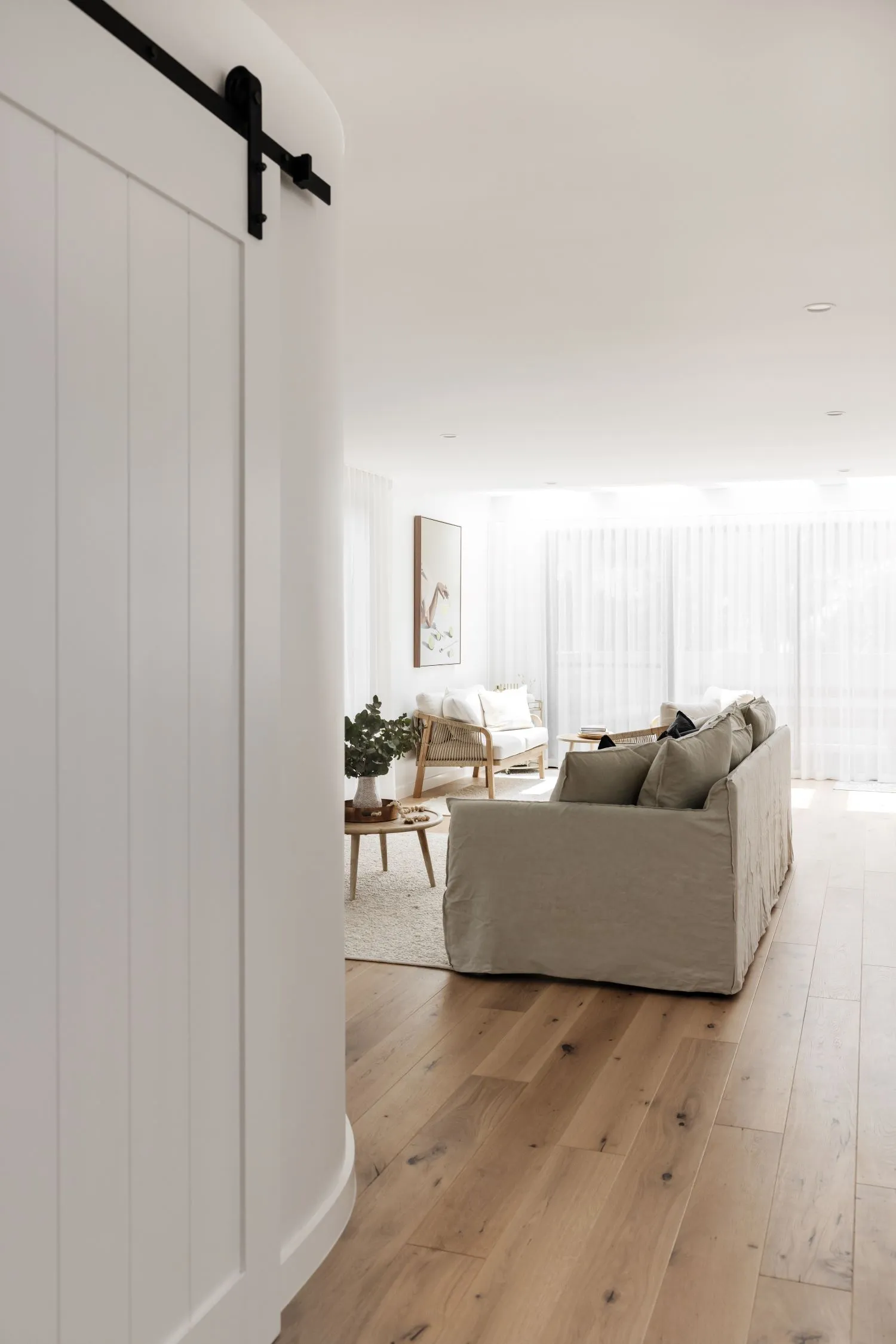 Image credit: The Beach Abode | Nat Spada
Image credit: The Beach Abode | Nat Spada
By expanding on these tips, you can create a Japandi-style living room that's not only visually appealing but also a reflection of the principles of minimalism, nature, and harmony that define this unique design approach.
Frequently Asked Questions
What Colours Are Used in Japandi Style?
Japandi style typically incorporates a neutral and earth-toned colour palette. The key elements of this palette include shades of white, beige, and soft greens, complemented by deeper tones like charcoal or navy to add depth. The use of these colours aims to create a calm, serene, and harmonious environment that promotes relaxation and comfort. Natural wood tones, often found in furniture and décor, are also a key component of the Japandi colour scheme, adding warmth and organic character to the space.
What is Japandi in 2024?
As of 2024, Japandi style continues to evolve while maintaining its core principles of minimalism, nature, and harmonious blending of Japanese and Scandinavian aesthetics. As time goes on, this trend remains popular with the addition of modern trends and technologies, adapting to contemporary lifestyles while staying true to its ethos of simplicity, quality, and sustainability. The style might see a deeper integration of eco-friendly materials and smart design solutions, reflecting a growing global emphasis on environmental consciousness and digital integration in home design. Japandi in 2024 remains a testament to timeless design, emphasising well-being, functionality, and a deep connection to the natural world.
What are the Rules for Japandi Design?
Minimalism: Keep the space clutter-free and intentional, with each item serving a purpose or bringing joy.
Neutral Palette: Utilise a calm and soothing colour scheme, emphasising neutrals and earth tones.
Natural Materials: Incorporate elements like wood, stone, wool, linen, and bamboo to bring an organic, earthy feel to the space.
Craftsmanship: Choose furniture and décor that are well-made and can stand the test of time, highlighting the beauty of artisanal craftsmanship.
Functionality: Every piece should be practical and functional, contributing to a living space that's both beautiful and livable.
Connection with Nature: Integrate plants and greenery to enhance the sense of calm and bring the outdoors inside.
Harmony and Contrast: Balance clean lines with organic shapes, and smooth textures with more tactile ones, to create a dynamic yet harmonious interior.
Comfort and Cosiness: Despite the minimalist approach, ensure the space feels warm and inviting, with soft textiles and comfortable seating.
What is the Concept of Japandi Style?
The concept of Japandi style is a fusion of Japanese and Scandinavian design philosophies. It combines the Japanese principle of wabi-sabi, which finds beauty in imperfection and transience, with the Scandinavian ethos of hygge, which emphasises cosiness and simple pleasures. Japandi style focuses on minimalism, functionality, and a deep connection with nature. It values craftsmanship, quality, and materials that age well, creating spaces that are not only aesthetically pleasing but also sustainable and meaningful.

